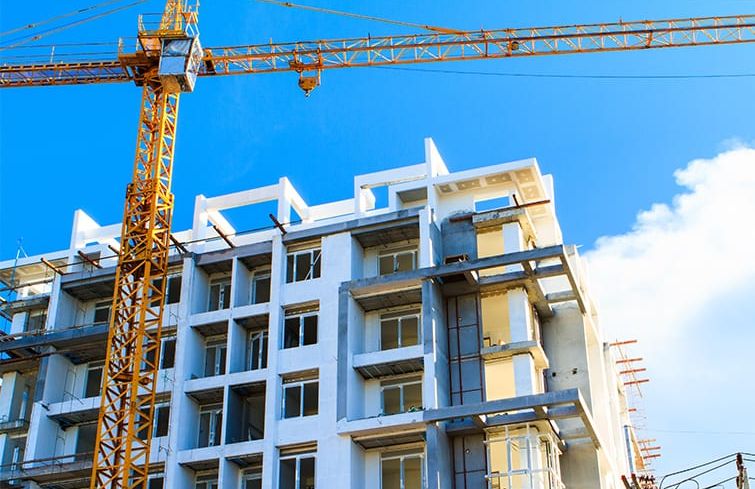Presented By: Greenworks Lending
C-PACE Financing Sees Massive Growth Nationally
What you should know about this alternative development financing mechanism
By Greenworks Lending June 7, 2021 8:00 am
reprints
Commercial Property Assessed Clean Energy (C-PACE) financing — a once little-known mechanism for property owners and developers to access low-cost, long-term, fixed-rate financing for new development or rehabilitation projects — is rapidly growing in popularity throughout the country. More and more states are adopting this assessment financing tool as governments look to incentivize commercial property owners to be more energy efficient and owners seek to find more affordable ways to upgrade their properties.
For many, the COVID-19 pandemic has caused pullback from the lending industry for dependable construction financing. As a result, C-PACE – a public-private financing program which has been around since 2007 – has increasingly helped fund new construction projects and recapitalize existing developments across the country throughout the pandemic.
Greenworks Lending, a Nuveen affiliate and the nation’s leading C-PACE capital provider, has funded hundreds of C-PACE projects across the country ranging from large multimillion-dollar developments to smaller, $500,000 solar projects.
For example, a new $13 million, mixed-use development project in Detroit utilized C-PACE to help fill a gap in the capital stack and bring down the developer’s weighted average cost of capital. Greenworks also recently provided $10 million in C-PACE capital for a multifamily property in Denver, Colo., enabling the property to undergo a massive renovation that included solar panels, new windows, a new roof, updated plumbing — virtually everything that the building needed. Greenworks was able to offer very attractive financing that significantly dropped the cost of capital for the project. Similarly, a Baltimore, Md., multifamily development leveraged $9 million in C-PACE capital, which will result in positive environmental and financial performance of the building.
Hotels are also seeing great value in C-PACE in the wake of the pandemic, as many states allow for C-PACE to recapitalize recently completed projects. A prominent hotel chain in Chico, Calif., was able to retroactively finance more than $3.5 million in eligible measures, allowing the hotel to free up liquidity and replenish operating reserves.
An owner-occupied, light industrial building in Long Island, N.Y., accessed $1.7 million in C-PACE financing for the installation of a 739-kilowatt community solar project. Community solar will allow them to turn their previously empty roof into a revenue-generating asset, resulting in an average net-operating income of $72,000 per year. The solar array will also provide significant tax benefits, as well as rental income of $2.14 per square foot with 3% escalation for 25 years. The owners are expected to realize $5.4 million of net income over the life of the solar array, all with no cost out of pocket.
Understanding C-PACE
C-PACE provides commercial property owners and developers access to low-cost, long-term financing for measures that impact the energy and water performance of a commercial property. The program is enabled by a state statute that classifies clean-energy upgrades as a public benefit — the same way in which other public benefits like new roads, streetlights and water mains are paid — allowing these measures to be financed with no money down and then repaid as a benefit assessment on the property tax bill.
The term and amortization of the financing matches the expected useful life of the improvements or new construction infrastructure, which is typically around 20-30 years. The assessment transfers on the sale of the property and can be passed through to tenants where appropriate. While facilitating sustainability efforts, the program reduces property owners’ annual costs and provides significantly better financing terms than the available alternatives to fund construction projects.
C-PACE capital can be used for any non-residential property, including commercial office, industrial, retail, hotels, private schools, health care facilities, agriculture, nonprofits and multifamily properties that consist of more than five units. Another benefit of C-PACE is that it can be layered in with other forms of economic development financing like historic and new market tax credits.
C-PACE financing is a very flexible financing tool and can be used toward almost any measure that impacts the energy or water performance of a property. This includes hard, soft, and any associated costs connected to mechanical, electrical, plumbing, building envelope improvements and renewable energy sources. Examples of C-PACE-eligible measures include HVAC, LED lighting, facility controls, low-flow water fixtures, insulation, roofing, windows, doors and solar, and much more.
C-PACE can improve developer internal rate of return by up to 50% for new development and gut-rehab projects. C-PACE is accretive to financial returns because it can provide developers capital at rates that are less than half the cost of traditional mezzanine debt or equity. In addition, it provides fixed-rate construction through term, is non-recourse, and the obligation transfers on the sale of the property or can be prepaid at any time.
For retrofit projects, C-PACE financing can be used to fund capital expenditures by providing upfront capital to replace aging equipment. C-PACE can provide up to 35% of the as-stabilized or as-complete property value for retrofits. Replacing aging equipment saves energy and results in lower operating expenses, thereby increasing net-operating income (NOI) and the value of the property.
With many states allowing for C-PACE recapitalization, property owners and developers can access low-cost, long-term, non-recourse financing with no payment for 24 months to fund unexpected construction costs, replenish operating reserves, and pay down existing leverage.
As a public-private partnership, C-PACE unlocks powerful public policy benefits for development projects. As such, governments views C-PACE as a key tool for economic development and sustainability goals. At no cost to cities and states, the program is quickly turning into a success story of how public-private partnerships can drive investment, not only providing owners and developers significant financial benefits, but benefiting local communities and the environment as well.
It’s no surprise that the C-PACE industry is booming.


